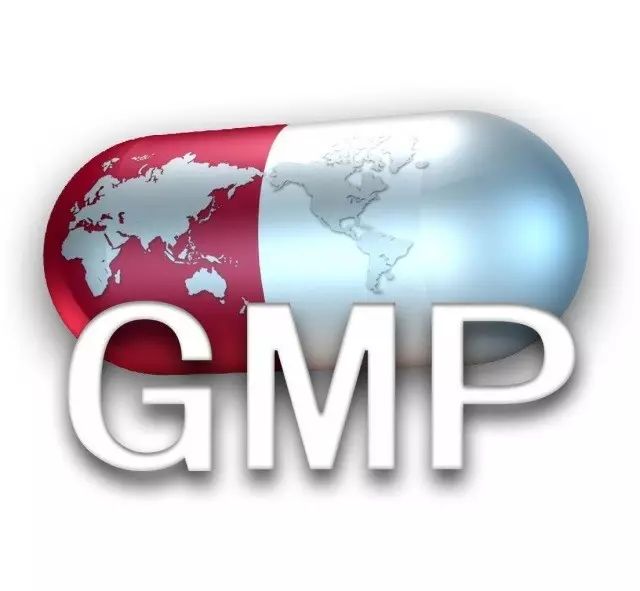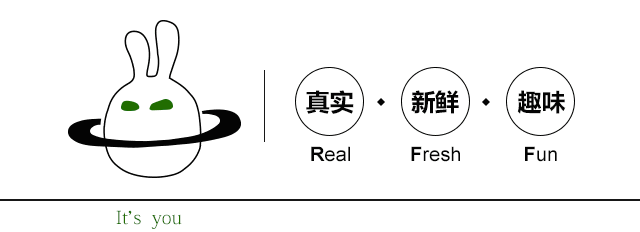7 Rules For Properly Interpreting Control Charts
正确解释控制图7大规则
ByMark Durivage, QualitySystems Compliance LLC
Control chartsbuild upon periodic inspections by plotting the process outputs and monitoringthe process for special cause variation or trends. Control charts aredecision-making tools that provide information for timely decisions concerningrecently produced products.‘
控制图建立在定期检查的基础上,绘制过程输出和监控过程的特殊原因的变化或趋势。控制图是一种决策工具,它为有关最近生产的产品的及时决策提供信息。
Control chartscan be used to identify sources of variation, both common and special cause.Common cause variation is the variation inherent in the process. Common causevariation is also known as the noise of the process. A process with only commoncause variation is highly predictable. A process that has a significantinherent common cause variation may not be capable of producing products thatmeet predetermined specifications. Common cause variation is said to accountfor 80% of the variation in any process and is considered management’sresponsibility.
控制图可以用来识别变异的来源,包括固有和特殊的原因。固有原因变异是过程中固有的。固有原因变异也被称为过程噪声。只有固有原因变异的过程是高度可预测的。具有显著的固有原因变异的工艺可能不能生产出符合既定标准的产品。固有原因变异占任何过程中80%的变异,并被认为是管理层的责任。
Special cause variationis variation that is not inherent to the process. A process with special causevariation is highly unpredictable. Special cause variation is said to accountfor 20% of the variation in any process and is considered the worker’sresponsibility.
特殊原因变异是指并非该过程固有的变异。具有特殊原因变异的过程是高度不可预测的。特殊原因的变异占任何过程中变异的20%,并被认为是工人的责任。
Control chartscontain a centerline — usually the mathematical average of the samples plotted— and upper and lower statistical control limits that define the constraints ofcommon cause variation and performance data plotted over time.
控制图包含一条中心线——通常是样本的数学平均值——以及定义固有原因变化约束的统计控制上、下限和随时间绘制的性能数据。
There are twogeneral classifications of control charts: variables and attributes charts.Variables are things that can be measured. Attributes are things that can becounted. The type of data (variable or attribute) will dictate the appropriatetype of control chart required to monitor a process. Table 1 can be used forcontrol chart selection.
控制图一般分为两类:变量图(计量型控制图)和属性图(计数型控制图)。变量是可以测量的东西。属性是可以计数的东西。数据的类型(变量或属性)将决定监控过程所需的控制图的适当类型。表1可用于控制图的选择。
Table 1: ControlChart Selection Guide
控制图选择指引
Selection of thecorrect type of control chart is important to ensure the underlying statisticalconcepts are appropriate for the feature or attribute being measured.
选择正确类型的控制图对于所用的确保底层统计概念适合于待测特征或属性十分重要。
A process issaid to be in control when the control chart does not indicate anyout-of-control condition and contains only common causes of variation. If thecommon cause variation is small, then a control chart can be used to monitorthe process. If the common cause variation is too large, the process will needto be modified or improved to reduce the amount of inherent variation to anacceptable level.
当控制图没有提示任何失控的情况,只包含固有变异原因时,即表示一个过程受控。如果固有原因变异很小,则可以使用控制图来监控该过程。如果固有原因的变化太大,则需要对该过程进行整改或改进,以将固有变异减少到可接受的水平。
When a controlchart indicates an out-of-control condition (a point outside the control limitsor matching one or more of the criteria in the rules below), the assignablecauses of variation must be identified and eliminated.
当控制图表明一个失控的情况(一个超出控制限度的点或符合下面规则中的一个或多个标准),必须识别和消除变化的原因。
The followingrules can be used to properly interpret control charts:
以下规则可用于正确解释控制图:
Analyzing acontrol chart for special cause variation can be facilitated by using thecategories used with a cause-and-effect diagram. The flowing are the categoriesthat I prefer to use:
通过使用与因果图一起使用的分类,可以方便地分析特殊原因变异的控制图。以下是我更喜欢使用的类别:
Rule 1 – Onepoint beyond the 3 σ control limit
规则1 ——任何1点超出3 σ控制限
Rule 1, onepoint beyond the 3 σ control limits, seeks to identify points that are randomor outliers, as shown here in red. When random or outlier points areidentified, the following are potential special causes to consider:
规则1:任何1点超出3 σ控制限,确定该点是随机的还是异常值,如图中红色所示。当随机点或离群点被识别时,以下是需要考虑的潜在特殊原因:
Process
过程
Inspection
检查
Materials
物料
Operator
操作人员
Rule 2 – Eightor more points on one side of the centerline without crossing
规则2 ——连续8点或以上在中心线同一侧
Rule 2, eight ormore points on one side of the centerline without crossing, is considered aprominent shift (the shift can be on either side of the centerline). The pointscircled in red are considered a prominent shift. When a prominent shift isidentified, the following are potential special causes to consider:
规则2:连续8点或以上在中心线同一侧,被认为是明显的移位(这种移位可以在中心线的任何一侧)。如图,红圈中的点被认为是一个显著的移位。当发现一个显著的移位时,以下是需要考虑的潜在特殊原因:
Environment
环境
Process
过程
Inspection
检查
Materials
物料
Operator
操作人员
Rule 3 – Fourout of five points in zone B or beyond
规则3 ——5点有4点在B区或B区以上
Rule 3, four outof five points in zone B or beyond, is considered a small shift (the shift canbe on either side of the centerline). The points circled in red are consideredsmall shifts. When a small shift is identified, the following are potentialspecial causes to consider:
规则三:5点有4点在B区或B区以上,被认为是一个小的波动(这个波动可以在中心线的任何一边)。如图,红圈中的点被认为是小波动。当发现微小的波动时,以下是需要考虑的潜在特殊原因:
Environment
设备
Process
工艺
Inspection
检查
Materials
物料
Operator
操作人员
Rule 4 – Sixpoints or more in a row steadily increasing or decreasing
规则4 ——6个或以上的点连续递增或递减
Rule 4, sixpoints or more in a row steadily increasing or decreasing, is considered atrend (the trend can be rising or falling). The points circled in red areconsidered a trend. When a trend is identified, the following are potentialspecial causes to consider:
规则4:6个或以上的点连续递增或递减,被认为是一种趋势(趋势可以上升或下降)。红圈中的点被认为是一种趋势。当确定一种趋势时,以下是需要考虑的潜在特殊原因:
Environment
环境
Process
工艺
Inspection
检查
Materials
物料
Operator
操作人员
Rule 5 – Two outof three points in zone A
规则5 —— 3点有2点在A区
Rule 5, two outof three points in zone A, is considered a large shift. (the shift can be oneither side of the centerline). The points circled in red are considered largeshifts. When a large shift is identified, the following are potential specialcauses to consider:
规则5:3点有2点位于A区,被认为是一个大的变异。(变异可以在中心线的任何一边)。如图,红圈里点被认为是大变异。当发现一个大的变异时,以下是需要考虑的潜在特殊原因:
Environment
环境
Process
工艺
Inspection
检查
Materials
物料
Operator
操作人员
Rule 6 – 14points in a row alternating up and down
规则6——连续14点在同一侧交替上下
Rule 6, 14points in a row alternating up and down, is generally considered to be overcontrol.The points enclosed in red are considered out of control. When this situationis identified, the following are potential special causes to consider:
规则6:连续14点在同一侧交替上下,通常被认为是控制过度。如图,红圈中的点被认为是失控的。当发现这种情况时,以下是需要考虑的潜在特殊原因:
Environment
环境
Process
工艺
Inspection
检查
Materials
物料
Operator
操作人员
Please note,even though the operator may be over adjusting the process, there may be otherspecial causes present.
请注意,即使操作人员调整过程过度,也可能有其他特殊原因。
Rule 7 – Anynoticeable/predictable pattern, cycle, or trend
规则7 -任何显著的/可预见的模式、周期或趋势
Rule 7 is anynoticeable/predictable pattern, cycle, or trend. The points circled in red areconsidered out of control. When these situations are identified, the followingare potential special causes to consider:
规则7:任何显著的/可预测的模式、周期或趋势。如图,红圈中的点被认为是失控的。当发现这些情况时,以下是需要考虑的潜在特殊原因:
Environment
设备
Process
工艺
Inspection
检查
Materials
物料
Operator
操作人员
Stratification
分段
Whenstratification is identified, it is generally due to one of two issues. Theoperators are purposefully truncating the measurements, or the process hasimproved significantly, which will require the recalculation of the statisticalcontrol limits.
当确定分段时,通常是由于两个问题之一。操作人员有意截断测量,或者工艺有了明显改进,需要重新计算统计控制限。
Conclusion
结论
It is time toconsider augmenting your validated pharmaceutical, medical device, and tissueproduction processes, including processing, packaging, and labeling, withcontinuous process monitoring using control charts to ensure continuedcompliance with established specifications and requirements.
是时候考虑加强你们已验证的制药、医疗器械和生产工艺,包括加工、包装和贴标,使用控制图进行持续工艺监控,以确保持续符合既定的标准和要求。
When implementingcontrol charts as part of your continuous process monitoring activities, ensurethe people responsible for completing the charts have been properly trained andunderstand the seven rules presented in this article.
在实现控制图作为持续过程监控活动的一部分时,确保负责完成这些图的人员得到了适当的培训,并理解了本文中提出的7大规则。
I cannotemphasize enough the importance of establishing documented procedures to managethe tools and methods used. Best practice includes providing the rationale foryour organization’s use of control charts for continuous process monitoring.The methods and tools presented in this article can and should be utilizedbased upon industry practice, guidance documents, and regulatory requirements.
建立书面的程序来管理所使用的工具和方法的重要性再怎么强调也不为过。最佳实践包括为公司使用控制图进行连续过程监控提供论据。本文提供的方法和工具可以并且应该根据行业实践、指导文件和法规要求加以利用。

公众号
GMP办公室
限 时 特 惠: 本站每日持续更新海量各大内部创业教程,一年会员只需98元,全站资源免费下载 点击查看详情
站 长 微 信: lzxmw777






